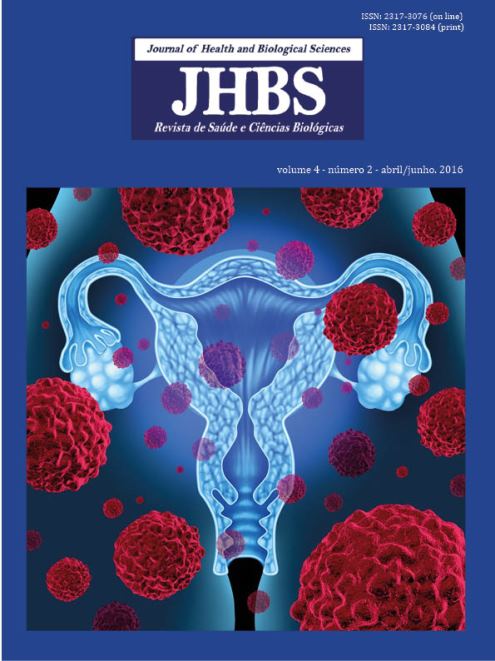Factors associated with children and teenagers’ trauma of victims treated at a referral center in Southern Brazil<br>Fatores associados a crianças e adolescentes vítimas de trauma atendidas em um centro de referência no sul do Brasil
DOI:
https://doi.org/10.12662/2317-3076jhbs.v4i2.518.p75-81.2016Palavras-chave:
Adolescent, Injuries, Trauma, Child, Children’s Development, Emergency Medical ServicesResumo
INTRODUCTION: Physical trauma is one of the most common causes of death and disability in children's development and adolescents. By consequence, pediatric trauma is a topic that needs further studies. OBJECTIVE: The identification of factors associated with child and adolescent victims of trauma treated at a referral center in Southern Brazil relating to trauma in children and adolescents from birth to age 14 years treated in a hospital emergency room. METHODS: A retrospective study using secondary data from a hospital service, performed the analysis of associated factors among 375 children and adolescents (range 0-14 years) admitted to the emergency room for any kind of physical trauma and the variables described about the traumas. The period was June 14 to December 14, 2013. RESULTS: Most patients were male (65.1%), white (89.1%); they were attended nightly (45.9%) and belonging to the age group 10-14 years (40.3%), head and neck prevailed in number occurrences with 33.6% of cases, followed by the upper and lower limbs 27.7% and 26.9%, respectively. Falls represented 45.6% of cases, followed by exposure to inanimate mechanical forces (12%) and exposure to animated mechanical forces (5.9%). The neurosurgery service was the most referenced for younger age groups, while for the older groups were the maxillofacial services (p = 0.001). CONCLUSION: This study showed results that draw the community’s attention not only academic, but also to call the attention of caregivers to work with constant prevention alternatives to the monitoring of the course of children’s development.
Downloads
Downloads
Publicado
Edição
Seção
Licença
Os artigos publicados na JHBS são de uso gratuito, destinados a aplicações educacionais e não comerciais.
Este artigo está licenciada sob uma licença Creative Commons - Atribuição-Não Comercial- Sem Derivações 4.0 Internacional

















